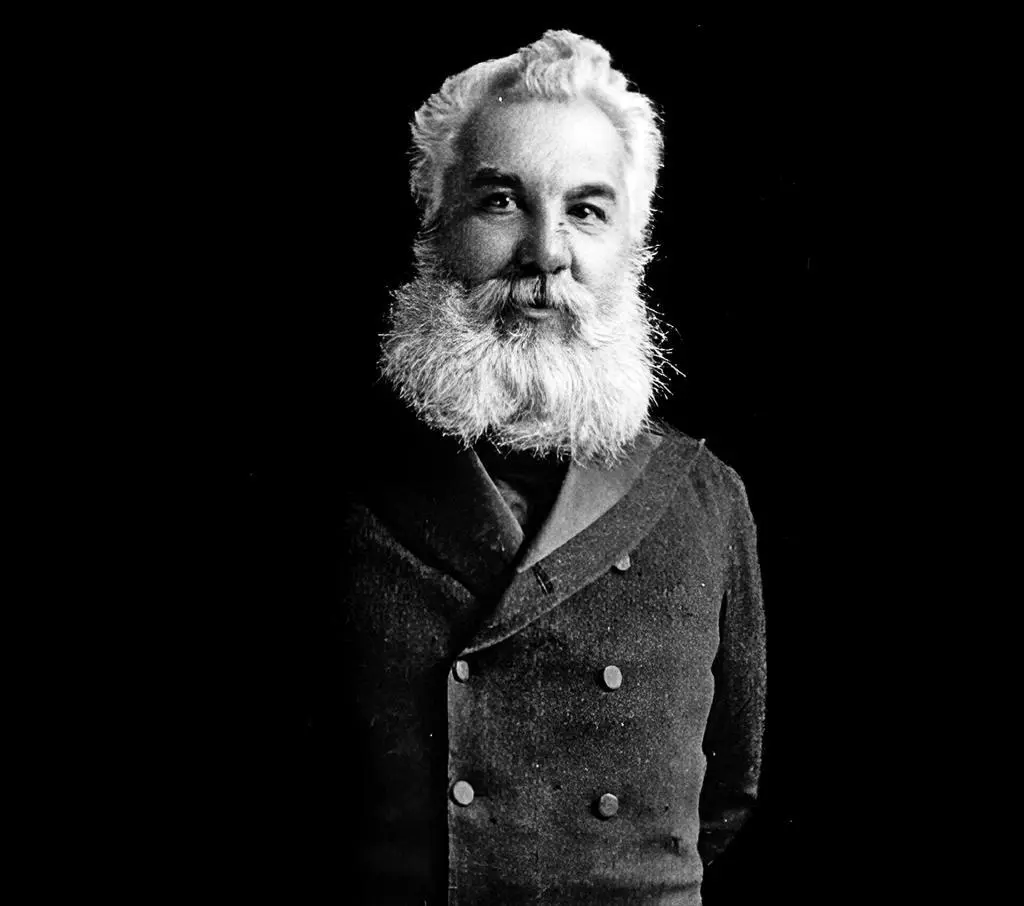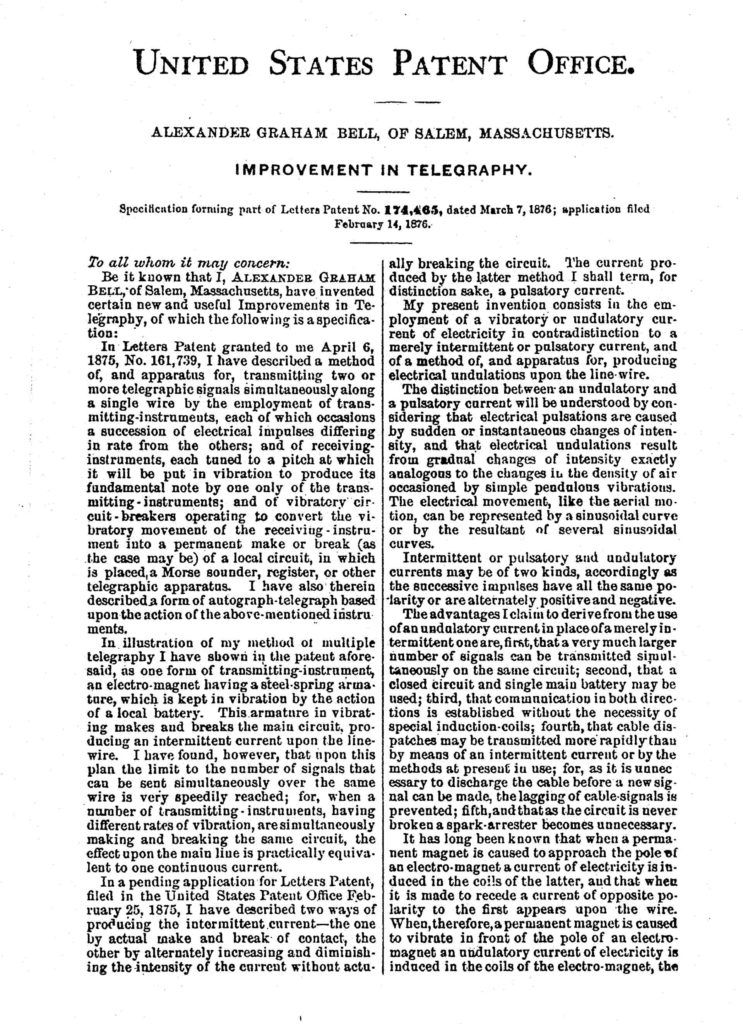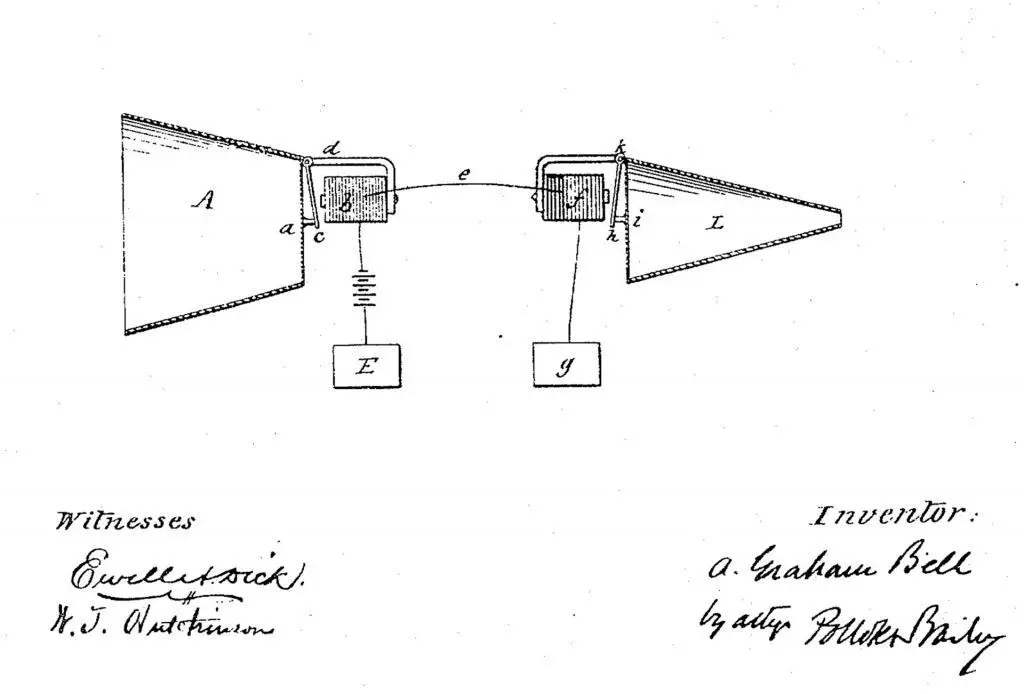The microphone, a device that converts sound waves into electrical signals, has revolutionized communication and had a profound impact on various industries and applications. In today’s modern world, microphones play a crucial role in a wide range of fields, from telecommunication and broadcasting to entertainment, film, television, journalism, and more. The ability to capture and amplify sound has transformed the way we communicate, record and broadcast audio, and interact with technology. The invention of the microphone has had far-reaching effects on society, shaping the way we communicate, entertain, and share information.
Who Invented the Microphone: Table of Contents
But Who Invented the Microphone?
Alexander Graham Bell was issued a patent for the first practical microphone in 1876, which represented a major milestone in the development of this ground-breaking technology during the course of its history. The first version of Bell’s microphone was little more than a wire that was able to carry direct electrical current (DC). He generated and received audio signals with the use of a movable armature transmitter and receiver, which enabled him to communicate in both directions.
Later on, Bell constructed a second sort of transmitting device known as a liquid transmitter, which he displayed at the Philadelphia Centennial Exhibition in 1876. The exposition was held in Philadelphia. When compared to his prior invention, this new microphone utilized a variable contact approach, which proved to be a more successful form of electrical signal modulation. This liquid transmitter was a significant step forward in the development of microphone technology, and it prepared the path for other advances in the area of telecommunications research and development.

So we can say that Alexander Graham Bell invented the microphone or at least the first practical one but this is not the whole image.
Although he is widely known for his invention of the telephone, the microphone was actually invented by other inventors. The carbon microphone, which is considered the direct prototype of today’s microphones and was critical in the development of telephony, broadcasting, and the recording industries, was independently developed by David Edward Hughes in England, Emile Berliner, and Thomas Edison in the United States. Although Edison was awarded the first patent for the carbon microphone in mid-1877 after a long legal dispute, Hughes had demonstrated his working device in front of many witnesses some years earlier, and most historians credit him with its invention.
It’s also worth noting that Emile Berliner, a German-born inventor, played a significant role in the development of the microphone. Berliner invented the carbon microphone transmitter that varied the contact pressure between two terminals as a voice acted against it, which was later sold to the Bell Telephone Company for $50,000.
Historical Background of the Invention of Microphone
The birth of the microphone can be traced back to early attempts at capturing and amplifying sound, which laid the foundation for the development of this groundbreaking invention. Before the invention of the microphone, various devices were used to amplify sound. Some early examples include the ear trumpet, a funnel-shaped device used to collect sound waves and direct them into the ear; the speaking tube, a system of pipes used to transmit sound over short distances; and the carbon microphone, an early type of microphone that utilized changes in carbon resistance to convert sound waves into electrical signals.
The emergence of telegraph and telephone technologies in the 19th century further fueled the need for a device that could convert sound waves into electrical signals for transmission and amplification. The telegraph, invented by Samuel Morse in the 1830s, enabled the transmission of electrical signals over long distances, revolutionizing long-distance communication. Similarly, the invention of the telephone by Alexander Graham Bell in 1876 allowed for the transmission of speech over long distances using electrical signals. However, early telegraph and telephone systems faced challenges in capturing and transmitting sound with sufficient clarity and volume, prompting inventors and scientists to search for a solution that could improve the quality and efficiency of communication.
This historical background highlights the growing need for a device that could effectively capture and amplify sound for transmission and amplification, setting the stage for the invention of the microphone. The development of telegraph and telephone technologies, along with the limitations of early sound amplification devices, paved the way for inventors and innovators to create a breakthrough invention that would revolutionize communication and have a profound impact on various industries and applications.
Eureka Moment: Invention of the Microphone
The invention of the microphone can be attributed to a series of breakthroughs by inventors and scientists who were working on the telegraph and electrical signaling technologies in the 19th century. Charles Wheatstone and Samuel Morse made significant contributions to the development of the telegraph, which involved the use of electrical signals to transmit messages over long distances. These early advancements in electrical signaling paved the way for the invention of the microphone.
Antonio Meucci is said to have invented the dynamic microphone in 1856. He did this by moving a coil of wire in a magnetic field to create an electric current. This new way of modulating became an important part of the technology that made the telephone possible. In 1857, Meucci himself talked about his invention, saying, “It has a vibrating diaphragm and an electric magnet with a coil of wire wrapped around it. When the diaphragm moves, it changes the way the current flows through the magnet. These changes are sent through the wire to the other end, where they cause the receiving diaphragm to move in the same way, making sound.”
In 1861, Johann Philipp Reis, a German inventor, constructed an early sound transmitter known as the “Reis telephone.” It utilized a metallic strip attached to a vibrating membrane that would produce intermittent current.
Thomas Edison’s work on the carbon microphone in the 1870s was a significant step towards the invention of the microphone. Edison’s carbon microphone utilized changes in the resistance of carbon particles when subjected to pressure from sound waves, converting the sound waves into electrical signals. However, the carbon microphone had limitations in terms of sensitivity and clarity, and inventors were still searching for a more efficient and effective solution.
In 1886, Thomas Edison took the carbon microphone and made it into the carbon-button transmitter. This microphone was used for the first radio broadcast, which was a performance at the Metropolitan Opera House in New York City in 1910.
In the race to patent the first practical microphone, Elisha Gray and Alexander Graham Bell were two prominent inventors who made significant contributions. In 1876, both Gray and Bell filed patents for electromagnetic microphones within hours of each other. Bell’s patent, granted on March 30, 1876, is widely recognized as the first patent for a practical electromagnetic microphone.

Bell’s electromagnetic microphone was based on the principle of electromagnetic induction, which involves the use of a diaphragm made of a thin conducting material (such as metal) that is attached to a coil of wire. When sound waves hit the diaphragm, it vibrates, causing the coil of wire to move in relation to a magnet. This motion induces an electrical current in the coil, which can then be transmitted as an electrical signal. Bell’s design was more sensitive and efficient compared to the carbon microphone, as it could convert sound waves into electrical signals with greater accuracy and clarity.

Bell’s patent for the electromagnetic microphone in 1876 marked a significant milestone in the birth of the microphone and set the stage for further innovations and advancements in microphone technology. His invention became a critical component in early telecommunication systems and played a crucial role in the advancement of telegraphy, telephony, broadcasting, and other fields.
Impact of the Microphone
The invention of the microphone has had a profound impact on various aspects of communication, entertainment, and media industries, shaping the way we communicate, record and broadcast sound, and interact with technology.
Advancements in telecommunication and broadcasting have been made possible with the use of microphones. Microphones have revolutionized long-distance communication, enabling clear and efficient transmission of speech and music over telegraph and telephone lines. Broadcasting, including radio and television, has also been transformed by the use of microphones, allowing for live and recorded sound to be transmitted to millions of listeners and viewers around the world. Public address systems in public spaces, such as stadiums, concert halls, and conference rooms, rely on microphones to amplify sound and ensure that speakers and performers can be heard clearly by large audiences.
The microphone has also played a pivotal role in revolutionizing speech and music recording. With the ability to capture sound with high fidelity, microphones have made it possible to record and preserve speech and music performances, leading to the development of the recording industry. Music recording, in particular, has been transformed by the use of microphones, allowing for detailed and realistic reproduction of musical performances, which has greatly influenced the development of various music genres and styles.
In the entertainment industry, microphones have become an indispensable tool in film, television, and live performances. In film and television production, microphones are used to capture dialogue, sound effects, and musical performances, enabling the creation of high-quality audio for movies, TV shows, and other forms of visual media. In live performances, microphones are used by musicians, singers, actors, and performers to amplify their voices and capture their performances for audiences in large venues or through broadcast and recording.
Microphones have also had a significant impact on journalism and speech recognition technologies. In journalism, microphones are used in interviews, press conferences, and news reporting, allowing journalists to capture and transmit sound accurately and clearly. In recent years, advancements in speech recognition technologies, such as voice assistants and speech-to-text applications, have relied on microphones to capture spoken words and convert them into text, enabling voice-based interactions with technology and improving accessibility for people with disabilities.
Beyond the technical advancements, the microphone has had social and cultural impacts on communication, entertainment, and media industries. The use of microphones has democratized access to public speaking, allowing individuals from diverse backgrounds and perspectives to share their voices and ideas with a wider audience. Microphones have also shaped popular culture, influencing the way we consume and interact with various forms of media, from music performances and movies to podcasts and social media content.
FAQs on “Who Invented the Microphone?”
Frequently Asked Questions (FAQs) on “Who Invented the Microphone?” shed light on the intriguing history and evolution of this transformative device. The invention of the microphone, a critical component in modern communication and technology, has been a topic of curiosity and speculation for many. In this section, we aim to provide answers to some of the most commonly asked questions about the origin and inventor of the microphone.
Who is credited with inventing the microphone?
Several people are credited with creating the microphone. The microphone was made by David Edward Hughes in England, Emile Berliner in Germany, and Thomas Edison in the United States. Edison got the first patent, but Hughes showed off his working device first, and many historians say he was the one who came up with it.
Berliner’s microphone also did well in the market, and Alexander Graham Bell used it in his phone. The carbon microphone, also called the “loose-contact” carbon microphone, is thought to be the predecessor of microphones used today. It was important to the growth of the telephone, radio, and recording industries.
Was the microphone invented by Alexander Graham Bell?
No, Alexander Graham Bell is not credited with the invention of the microphone. Although he used a type of microphone developed by Emile Berliner for his telephone, the invention of the microphone is attributed to David Edward Hughes, Emile Berliner, and Thomas Edison. Alexander Graham Bell is known for his work on the invention of the telephone, but he did not invent the microphone.
What year was the microphone invented?
In the middle of the 1870s, the first microphone was made, which made voice telephony possible. Several people worked on making the microphone around the same time, but David Edward Hughes, Emile Berliner, and Thomas Edison are credited with making the carbon microphone, which is the first microphone that could be used for voice telephony.

